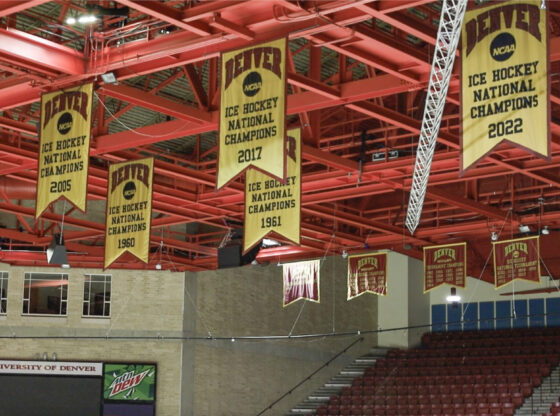The following is a Letter to the Editor for the Opinions section.
Dear Editor,
As a graduate of the University of Denver, I was dismayed to learn of the school’s plans for reopening in the fall. The plans are outlined in a 71-page draft, “Our Action Plan for DU’s Fall Return to Campus,” conceived by the university in cooperation with various health organizations and other advisors.
Great effort went into this plan. But great effort also went into plans for reopening U.S. states and salvaging the Major League Baseball (MLB) season. The undeterred spread of COVID-19 has made a mockery of these re-openings. There are too many debacles to keep track of, and many of them center around the gathering of young people.
The only viable response to this virus is staying home. Rather than advising this route, a task force has concluded the DU should move forward with fewer people on campus, fewer in-person classes, stores of masks and disinfectant sprays, modified air conditioning, cleaner hands and social distancing.
DU’s decision is in line with reopenings planned by various institutions. In this sense, DU should not be singled out. But it is the school I attended, and I wish to speak to and for those students, faculty and staff who may share my sentiments. In my current career, I have regular meetings with college and university professors. I have yet to encounter one who is enthusiastic about going back to campus. The most common frustration I hear is that schools are making reopening decisions with insufficient substantive input from faculty.
A University of Michigan creative writing professor confided that he has no interest in being in “a room full of students who are going out to the bars at night.” A department chair at Princeton indicated that all faculty in his department are pushing for a fully virtual model. An economics professor at Ohio State is not thrilled about teaching at an institution that plans to proceed with its football program, allowing up to 20,000 fans in the stadium during games.
DU is not entirely forthcoming—one might even say conspicuously silent—in its presentation of the results of its community survey, particularly with respect to overall attitudes about returning in the fall. Specific numbers are given in relation to community confidence about various aspects of reopening. But there is no meaningful scaled rating or percentage to indicate how specific groups such as faculty and staff feel about returning. It is merely noted that 59.6% of respondents replied to the open-ended question at the end of the survey. This cannot be considered comprehensive.
Section e of the 71-page document reads as follows:
“e. Overall Concerns and Questions about Returning to Campus
i. An open-ended question came at the end of a long survey and 59.6% of the respondents, evenly divided from staff (24%), faculty (20%), undergraduate (29%) and graduate students (27%), to the survey wrote a response.
ii. The concerns/themes reiterated the most related the specific protocols for mitigating COVID-19 on campus, including outbreak potential, anxiety, privacy, trust, stigma, complacency, noncompliance, testing availability, student conduct, accountability, conflicting goals and opinions, and enforcement.
iii. A number of additional issues were raised such as financial concerns and pressures, transportation, adequate learning environments, campus closure, a sudden return to online courses, ventilation, isolation and quarantining, burdens placed on staff and faculty, and conflicting family needs.
iv. A number of respondents also questioned how DU would handle inequities for people of color on campus related to COVID-19 and more broadly.”
This summary is entirely inadequate. Not indicating what percentage of respondents reported overall concern or how severe said concerns are is unacceptable. The list of things people are concerned about, however, may be called impressive for both its length and indication of severe distress. In this sense, the summary is entirely adequate.
School districts near my home in Princeton, New Jersey have provided all students with the option of a fully virtual education in the fall. In surveys conducted by the West Windsor-Plainsboro district, approximately 50% of parents of high school students and 60% of parents of elementary school students indicated they would choose homeschool if a fully virtual option was not made available. This number was sufficiently alarming. The district listened. My employer, after conducting a company-wide survey, chose to reopen its offices no earlier than January. Fully virtual options should be available to everyone.
It will be an unenjoyable fall at best and a panic-inducing one at worst for those more inclined to worry about contracting a potentially deadly virus than missing a year of in-person school. I would imagine a significant percentage of DU students, faculty and staff fall into this category. The return will perhaps be enjoyable for the handful who have chosen not to take the virus seriously. The rush to reopen, especially in this country, is the most ill-advised phenomenon we have witnessed in our lifetimes. Yet our institutions of higher learning spend significant resources producing long documents that rationalize a return to in-person schooling during a pandemic.
This should not sit well with us. America has ended up in its current public health crisis for many reasons. Among them, we must count the failures of educational institutions. Knowledge of academic subject matter is important. But it is not worth more than our lives. It is time to think closely about what and how we are being taught. The best place to do it is in the comfort and safety of our homes.
Jerome Keeler, ‘98











